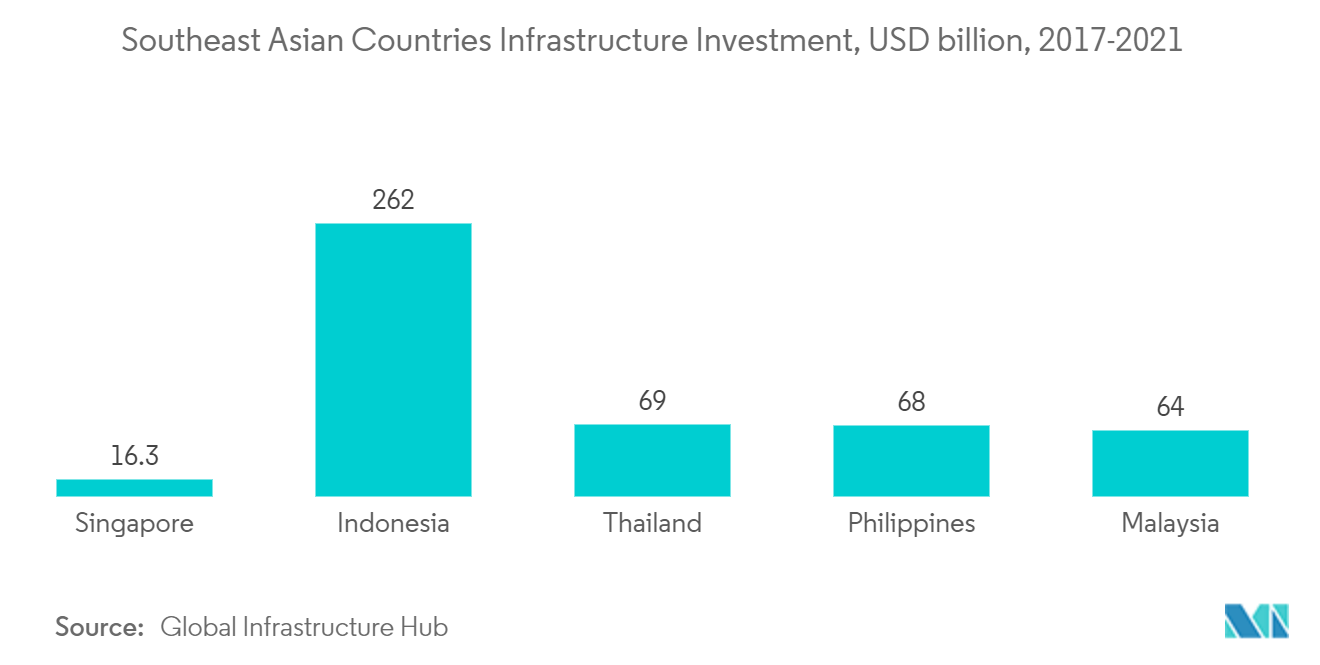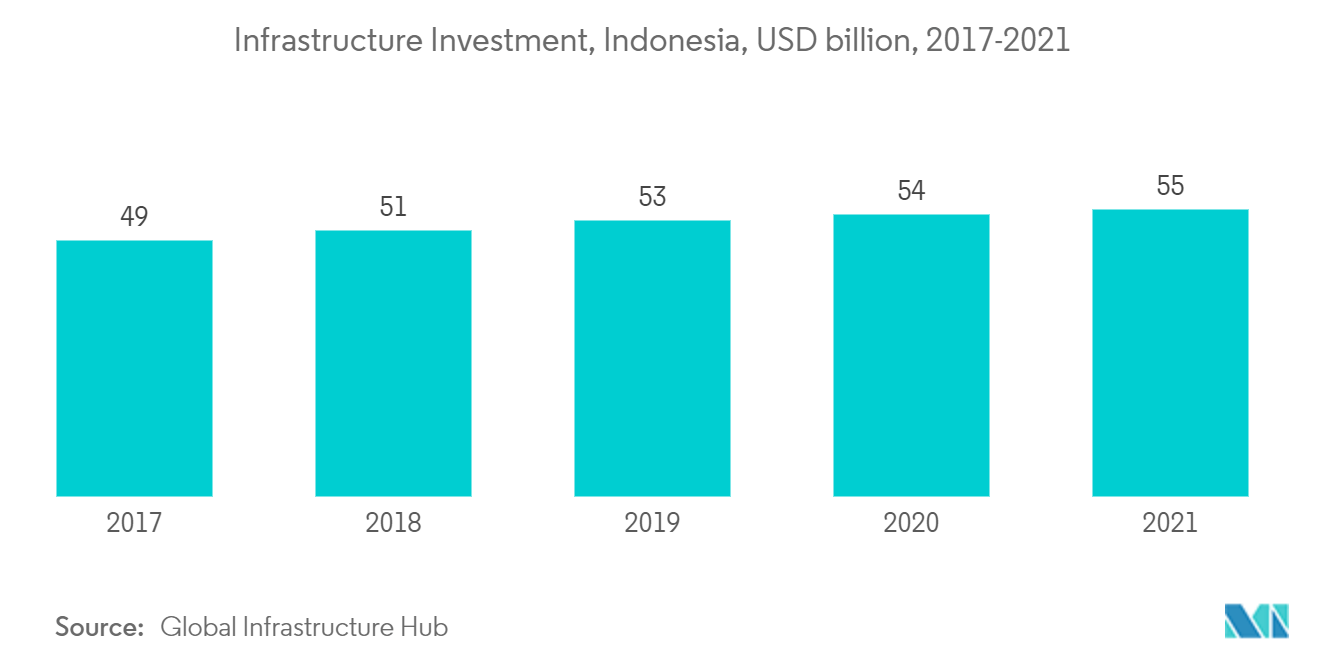Market Trends of Southeast Asia Repair and Rehabilitation Industry
This section covers the major market trends shaping the Southeast Asia Repair & Rehabilitation Market according to our research experts:
The Rising Demand for Infrastructure Repair and Rehabilitation
- The Southeast Asia repair and rehabilitation market is expected to grow significantly over the forecast period due to the increasing demand for infrastructure development. The region experienced tremendous urbanization, raising the need for infrastructural development.
- As a result, the region includes a greater demand for repair and rehabilitation services. The market is likely to be driven by increased government initiatives and investments in infrastructure development. Governments in the region are investing extensively in infrastructure projects such as roads, bridges, airports, and trains.
- According to the Global Infrastructure Outlook, critical Southeast Asian countries (Singapore, Indonesia, Thailand, the Philippines, and Malaysia) spent USD 479.3 billion between 2017 and 2021. Indonesia led with USD 262 billion, Thailand with USD 69 billion, and Malaysia with USD 64 billion.
- Thailand made a significant investment in infrastructure in recent years. Thailand proposed funding 37 infrastructure projects totaling USD 45 billion as part of a national infrastructure overhaul in 2022.
- Overall, the increasing population will generate the need for new infrastructure and maintenance of existing infrastructure, boosting demand for the repair and rehabilitation sector.

Indonesia is Anticipated to Hold a Major Market Share
- Indonesia's infrastructure repair and rehabilitation market are predicted to increase due to increasing government attempts to upgrade the country's infrastructure, rising investments in infrastructure projects, and rising demand for repair and rehabilitation services.
- The Indonesian government undertook several projects to improve the country's infrastructure. The government initiated many tasks to improve Indonesia's infrastructure, such as the National Strategic Projects (NSPs). Among the NSPs are the Trans-Sumatra Toll Road, the Trans-Java Toll Road, and the Trans-Kalimantan Toll Road. These projects are likely to have a favorable impact on the Indonesian infrastructure repair and rehabilitation sector.
- In recent years, Indonesia made significant investments in infrastructure development. Between 2017 and 2021, the government spent USD 262 billion on infrastructure developments, emphasizing modernizing roads, ports, airports, trains, and power plants. According to the Global Infrastructure Hub, in 2021, infrastructure spending in Indonesia amounted to USD 55 billion.
- Indonesia's residential sector is multiplying, driven by a growing population and rising incomes. The government implemented policies encouraging affordable housing development, including tax incentives for developers and subsidies for low-income households.
- Considering all the above factors, the demand for repair and rehabilitation is anticipated to expand during the forecast period.


